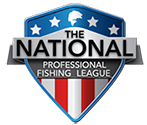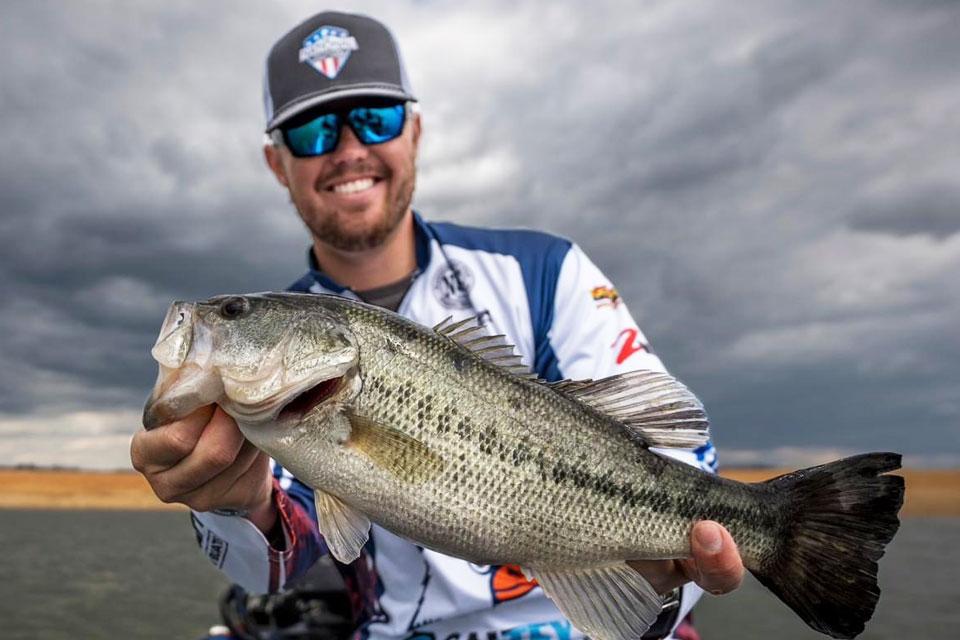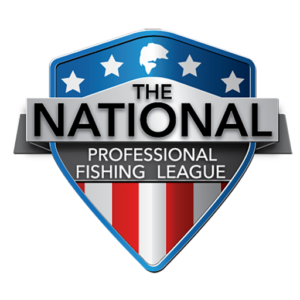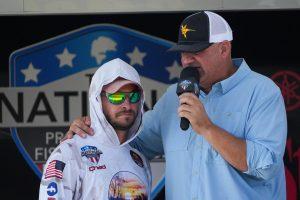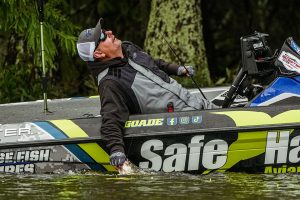Story by Hunter Sales
For generations, the months of July and August have been known as “dog days” of summer bass fishing. The bite is historically tough, and tournament organizations have shied away from this time of the year. The NPFL event on Pickwick was a great example of how this paradigm is shifting. In order to get a check, an angler had to catch 15 pounds per day. To place in the top 10, it required over 19 pounds per day! These weights surprised much of the bass fishing world, and with good reason. These weights are much better than late-July tournaments of the past.
This really comes as no surprise to those involved in the professional fishing industry. With technology allowing anglers to understand more about bass behavior than ever before, it seems that dog days were merely a misunderstanding of bass behavior. It’s not that the bass are harder to catch than at other times of the year, but that they are simply located in atypical areas!
Fishing pressure from the countless boats that enjoy the lakes in the summer has always forced bass to reposition on offshore areas. Just a few years ago, it was common knowledge that fish on highly-pressured offshore areas would suspend in response to fishing pressure. Now, as those suspended fish have became easier to target, the fish have been forced to adapt again.
It seems we are on a new frontier of understanding fishing behavior. The fishing industry experienced an all-time high number of licensed anglers during the pandemic of 2020. This led to more boats on the water than ever before. Most beginner bass anglers will start by fishing cover that is visible to the eye. This increased pressure on shoreline cover resulted in more fish moving away from the bank, where they were met with anglers who were proficient with their electronics (though live sonar was not yet common).
The point I’m trying to make is that nature is complex. Ducks, deer, and turkey all have their own strategies to evade both their natural predators and us humans. When the ultra-realistic Mojo duck decoy was introduced, everyone swore that it would lead to a population decline in ducks, as this decoy was simply too good! Now we know that the ducks have figured out this trick as well. Much in the same way, bass are already learning how to evade our live sonar.
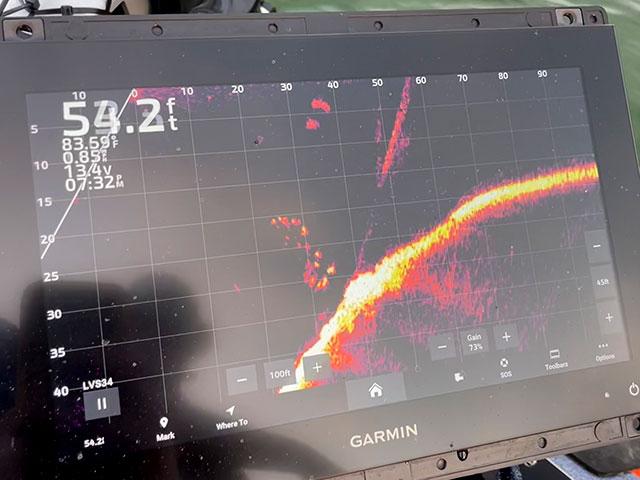
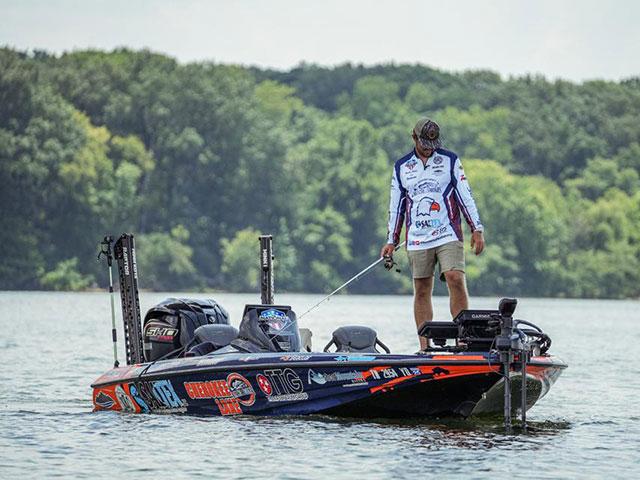
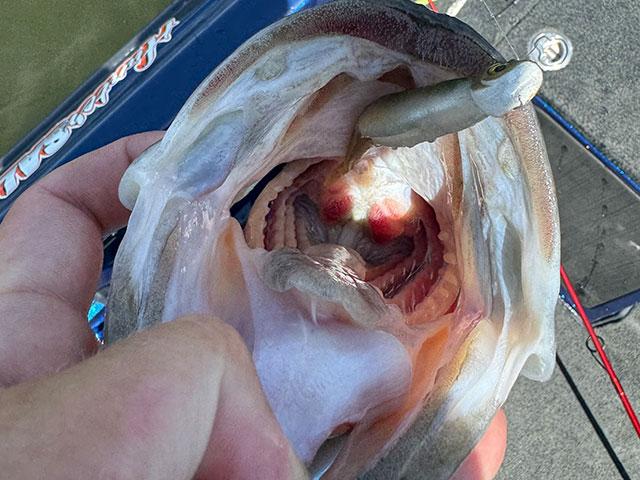
To target these well-educated, late-summer bass, you are still required to do things that few others are doing. This can include spending hours behind your electronics to find subtle hard spots or contour changes that aren’t recorded on our high definition mapping cards or perusing the river channel looking for groups of nomadic fish that are very challenging to catch. There are far more fish than we ever realized that will live over 60, 80, or even 100 feet of water while following the massive schools of bait that exist right now in the river channel of nearly every lake in the country. These fish are much harder to pattern as variables like the wind, standing timber, or super-deep river current breaks are very difficult to observe.
Once you find these groups of bass, they are often active and moving. It’s important to make an accurate cast before they feel the presence of your boat. To help with this objective, I like to stick with a bit heavier jighead than might ordinarily be used on spinning tackle. A 3/8-ounce ball head thrown on a 7-foot or longer, medium action rod with 15-pound Seaguar Smackdown braid to an 8-pound Seaguar Tatsu leader is my set-up of choice due to the ability to make long, super accurate casts.
Braided-line casts much further than fluorocarbon and has less memory. The 3/8-ounce ball head is less impacted by the wind than lighter heads. I typically opt for a realistic soft-plastic minnow such as the Z-Man Scented Jerk ShadZ.
Our sport is still growing rapidly as high-school and college programs seemingly pop up each day. This is a great sign of things to come in our industry, but it is undoubtedly having an impact on fish behavior. The next time you’re on the water, forego the traditional techniques that you practiced as a kid and explore some open water options. It is a great way to learn more about the sport that we all love!
Thanks for reading, I’ll catch up with you all soon!
